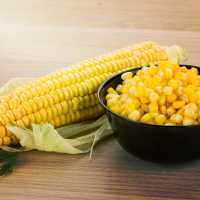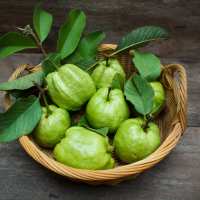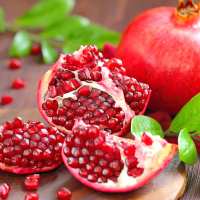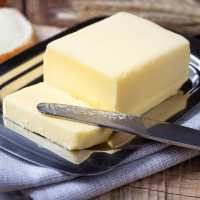From the spicy and fiery taste of red chillies and coriander’s earthy fragrance to the distinct cumin flavour, Indian gastronomy never ceases to amaze you with its rich flavours. Rich food platters with unique flavours, diverse spices, and vibrant culinary practices with a vintage touch characterize Indian cuisine. The cuisine of India can be described as a reflection of our rich ancient heritage and vibrant history spanning over millions of years delicately woven with culture and tradition [1]. The influence of regional cuisine variations, invasions by foreigners, and ancient civilizations makes Indian cuisine a fine testament to the country’s gastronomic artistry [2].
What Is So Special About Indian Gastronomy?
With its cuisine history dating back to the Indus Valley Civilization, Indian gastronomy began when people began grain cultivation and discovered unique cooking methods and techniques. Vedic culture refined Indian food by stressing the usage of specific herbs and spices to enhance food’s flavour and therapeutic value. Ayurveda, the ancient medical system of the country, had a pivotal role in balancing the flavours and adding ingredients loaded with medicinal properties [3]. Over time, Indian gastronomy influenced the cuisines of Persia, Europe, and the Mughals as the trade flourished [4]. Indian cuisine has varied regional diversity, making its gastronomic experience more interesting.
Each region in the country boasts its distinct cooling style, interesting flavour combinations and traditional dishes with impeccable flavours. Indian gastronomy can be relished with the East delighting you with its seafood fare, South India with its coconut-based conventional foods, and flavourful North Indian food. Every traditional festival and special occasion in India is never complete without a lip-smacking food platter. Guests visiting Indian homes are never hungry as they are welcomed with warm homemade food prepared with love and oodles of ghee. In short, India’s culinary tapestry not only tingles your taste buds but also gives you an amazing experience of the country’s culture, traditions, and flavours.
Staple Foods: Essential Aspect of Indian Gastronomy
Food preparation is pivotal in the country’s culture, as it is well-integrated with religious practices, festivities, and social occasions. Indian food, rooted in rich culture, can build relationships by bringing people together and is often used as an expression of love. Several recipes you enjoy in India today are prepared from recipes passed from one generation to another to protect familial bonds and preserve culinary traditions. Read on to learn more about the staple foods of India and the history behind them.
Food
Evidence shows that agriculture in India began around 800 BCE, and wheat crops are said to be cultivated during 6500 BCE. The archaeological findings of huge open pots and bowls indicate that early amphibians might consume foods like gruel or porridge. The Harappan and Indus Valley civilizations grew crops like wheat, lentils, barley, and millet from 3000 – 2000 BCE.
Rice

Rice remains the staple food of most regions in the country. Each state has its distinct variety of rice with varying tastes, fragrance, and cooking time. Several authentic dishes like aromatic Biriyani, pulao, Bhakri, and Pongal are prepared with rice with rice. Basmati, black, brown, and red rice are widely used varieties in the country.
Wheat

This is yet another versatile grain that is cultivated across major regions in India. This staple grain is pounded into varying textures like coarse or soft, fine powder for rawa and atta. Wheat flour is used for preparing a wide range of dishes like parathas, halwa, and rotis.
Maize (Corn)

Maize is mostly used in the main course for snacks, which is why it plays a vital part in the regional cuisines of India. Corn is the staple food of regions like Karnataka, Maharashtra, Madhya Pradesh, Rajasthan, and Punjab.
Jowar (Sorghum)

Sorghum, a millet type, is resistant to drought, as it can grow even in regions with sparse irrigation. It is a staple of Karnataka and Maharashtra and is widely used to make rotis and bhakris.
Bajra (Pearl Millet)

This nutrient-rich millet is the staple food consumed in regions like Tamil Nadu, Rajasthan, and Gujarat. Recipes like dosas, rotlas, and rotis are prepared with bajra.
Ragi (Finger Millet)

Touted as the superfood, Ragi is widely grown in South India like Tamil Nadu, Karnataka and Uttarakhand. Dishes like dosas, rotis, porridge, and gruels are prepared from ragi flour. It is loaded with dietary fibre, making it an excellent choice for babies and adults to lower the risk of heart issues and diabetes.
Lentils and Legumes
Indian cuisine is popular for its dishes with rich texture, as legumes and lentils are widely used. These two ingredients used in Indian cuisine make the dishes delicious and loaded with lots of nutrients. Some of the commonly used legumes and lentils are listed below.
Chickpeas

Also known as chole or Channa, it is available in three forms – green-tinted ones called hara channa, a white-skinned variant called Kabuli channa, and smaller reddish brown-tinted beans called desi channa. Channa has a nutty and earthen flavour, a staple ingredient in Indian cuisine. After soaking and boiling it, it is consumed as a whole in chole masala, curries and gravies. Chickpea flour is also used to prepare snacks like bhaji and pakoras and dishes like thalipeeth and dhokla.
Lentils (Masoor Dal)

Masoor dal is an orange-coloured lentil with a pleasant taste and smooth texture, making it a key ingredient in stews, soups, and dal. This lentil is mostly used in the Northern and Eastern parts of India. This fibre-packed dal gets digested easily and has an earthen taste.
Mung Beans

Mung beans are protein powerhouses and have green skin and yellow inner parts. Archaeologists have discovered this bean in the archaeological sites of Lothal, which was inhibited by the Indus Valley Civilization during 2600 BCE. It can be consumed in split, sprouted and whole form with or without skin. Mung bean prepares savoury and sweet dishes, especially in South Indian cuisine. You can relish it as payasam, pradhaman, dal, curries, and kichdi.
Kidney Beans

Kidney beans are mostly used as a staple ingredient in Northern parts of the country and are loaded with minerals like potassium and iron, vitamins, fibre, and protein. Locally known as Rajma, this bean is rich in plant-based protein, minerals, and fibre to enhance energy levels. It is widely used in recipes like Rajma Chawal, masalas, and gravies.
Black Gram (Urad Dal)

Popularly called urad dal, this legume is a crucial part of Indian cuisine, especially in North Indian and South Indian cuisines. This tiny black-coloured legume contains minerals like calcium, potassium, iron, nutrients, fibre and plant-based protein. It is used with and without skin and as a whole or in split form. Black gram prepares idli, dosa, curries, stews, soups, dals, and vadas.
Vegetables
Fresh vegetables are special in Indian cuisine, which explains why Indian foods always have plant-based ingredients. The diverse climatic conditions ranging from alpine to tropical have helped the country cultivate its vegetables. The origin of several vegetarian recipes belongs to the Vedic period, as vegetarianism was actively followed as a religious, cultural, and social practice.
Potatoes

Potatoes are one of the most commonly used vegetables in India. This tuberous vegetable is starchy, so it is used for stuffing in parathas and for thickening gravies or curries. This versatile vegetable tastes best when used in mashed, fried, baked, curried, and boiled form.
Onions

Most Indian gravies and stir fries are prepared with onions as the basic ingredient. This vegetable has a pungent smell and savoury taste with a slight sweet hint. Whether it is the traditional sambhar, paneer butter masala, or scrambled eggs, no Indian dish is complete with a sprinkling of freshly cut onion.
Tomatoes

Tomatoes are also one of the main ingredients used in Indian cooking. This nightshade vegetable is versatile and has a tangy and sweet flavour. It is widely used in making soups, curries, gravies, and jams. It is also used raw in salads and chat recipes. Green, cherry, and regular tomatoes are used for consumption in India.
Spinach

This green leafy vegetable is a healthy ingredient for making several regional recipes for its delightful texture and distinct flavour. The spinach leaves are used after chopping finely for stir-fries, blanched, or sautéed to get creamier gravies. This nutritious leaf vegetable is tender to the touch and gets cooked quickly. It is loaded with vitamins K and A, antioxidants, and iron, making it a filling choice for people on a weight loss diet. It enhances the flavour when paired with cottage cheese, onions, tomatoes, coconut, and mushrooms.
Cauliflower

Cauliflower is among the Brassica oleracea species like kale, Broccoli, and cabbage. This cruciferous vegetable has a crisp and tender texture, making it an alternative to meat in recipes. It has a unique flavour and can absorb the flavours used in recipes. Cauliflower is used in Indian dishes like Biriyani, soup, gravy, and fry.
Seasonal Fruits
Seasonal fruits in India are popular for their soft yet crisp texture and juicy, sweet yet tangy flavour, making them a treat for taste buds and an immunity booster. These fruits are available only in specific seasons, making them highly nutritious and have a delicious taste as they are picked when ripe.
Mango

Popularly called the ‘King of Fruits’, mango is hailed as the country’s national fruit. This fruit has a delectable taste and is available in hundreds of varieties to satiate your taste buds. It is a part of Indian cuisine, and your experience with Indian gastronomy will not be complete unless you taste lassi, aamras, shrikhand, or phirni prepared with fresh mangoes.
Banana

Banana is grown across all regions in the country and is loaded with dietary fibre, potassium, vitamins C and B6 [5]. They can be consumed as a ripe fruit or cooked in raw form in gravies and fries. It has a creamy texture and mild sweetness, making it an ideal choice for desserts [6]. Every part of the banana tree, like its flowers, stem, leaves, and fruit, is used in Indian cuisine.
Papaya

Hailed as the fruit of angels, this low-calorie fruit is widely used by Indians for its sweet taste and soft texture. Papaya is consumed both in raw and ripe form. This fruit is loaded with phytochemicals, digestive enzymes, minerals, flavonoids, polysaccharides, and vitamins to enhance gut health and skin health [7]. Semi-ripe papayas make curries, kofta, halwa, and kheer.
Guava

The hard-crusted fruit is locally grown in several parts of India. Guava has a hard texture with green outer skin and soft pulp in white. This fruit is abundant in pectin, calcium, and vitamin C. Its medicinal properties make it a perfect choice for healing wounds, diabetes, and body pain and enhancing intestinal health. It is used in Indian kitchens to prepare jams, jellies, pickles, and sauces.
Pomegranate

The pomegranate seeds are used in Indian cooking for their tart and sour flavour to replace amchur, kokum, and tamarind. They have a sweet and sour flavour, making them an excellent choice for legume and vegetable dishes, such as Aloo Anardana, Dal Tadka, and Chole. It is loaded with nutrients, has blood-purifying properties, and helps improve digestive health.
Dairy
Dairy has remained a popular ingredient in regular Indian meals for several centuries. Dairy products have a creamy texture and richness to the gravies and other dishes. Dairy-based ingredients are high in nutritional value and are wholesome ingredients to enhance your overall health.
Milk

Milk plays an important part in Indian cooking, as it has a mild, sweet flavour and can enhance the overall flavour of any dish where it is used. One of the common ways through which milk is used in Indian cuisine is during the preparation of desserts. Kheer, Gulab Jamun, Rasgulla, and Bengali sweets are prepared during special occasions like festivals, weddings, and more. Milk is commonly used to make a hot beverage called Chai or tea and coffee.
Paneer

Paneer grabs the centre stage in North Indian kitchens, as most traditional dishes include cottage cheese with a soft texture and unique flavour. Paneer is rich in protein, as it is extracted from milk and is mostly used in several non-vegetarian and vegetarian recipes. Classic dishes like palak paneer, tikka, paneer matter masala, and paneer burji are well-known dishes you must try.
Yoghurt (Curd)

Indian cuisine and curd are inseparable, as they play a crucial role, from preparing marinade for starters to desserts like Mishti Doi. It is also used along with onion slices to make Raita, an accompaniment for biriyanis. Several dishes like curd rice, kadhi, Shrikand, and more are prepared from yoghurt in India.
Ghee

Ghee is prepared by melting butter and is mainly used to fry and cook Indian foods. Loaded with health benefits, ghee is a main ingredient in preparing Indian sweets like mithais, burfis, Mysore Pak, and savoury snacks. It has an enticing aroma and adds a rich flavour to all dishes. It has anti-cancer properties, improves digestion, lowers the risk of developing ulcers and serves the role of a natural antioxidant [8].
Butter

An iconic ingredient used in Indian cuisine, butter is creamy and velvety smooth, making it an apt choice to enhance the flavour of vegetarian and non-vegetarian dishes. It is used to spread and topping on parathas, flatbreads, and naan. It is widely used to make creamy gravies in northern regions of India and for frying spices to unleash their aroma and flavours.
Spices
Spices have always played a significant role in enhancing Indian cuisine and the association between them has lasted over a thousand years [9]. Spices are mostly used across all regions in the country as a preservative agent, colouring ingredient, flavouring agent, and for improving its palatability. As the largest spices producer, several spices are used in Indian kitchens for their medicinal properties and holistic effects. Different parts of plants like the fruit, flower, bark, bud, and root are extracted to make these spices [10].
Turmeric

Also called Curcuma longa, this spice belonging to the ginger family has a bright yellow shade and is commonly used throughout the country. Turmeric is used in fresh and dry forms as a powder to complement the look of gravies, soups, and stir-fries. The distinct flavour of this spice with medicinal properties makes it a compelling addition to all recipes. Turmeric possesses curing abilities, making it an ideal choice for preventing cancer, osteoporosis, and coronary illness and promoting mental health.
Cumin

Cumin is vital in Indian cuisine, as it has a slightly bitter, nutty and hot flavour. It was regularly used in Ayurveda for preparing medicines and is usually added to seed-form recipes. It is somewhat crushed with a mortar and pestle to release its heat and flavour in powdered form in masala gravies and soups. It has numerous benefits, such as enhancing bone health, relaxing mental health, enhancing nutrient absorption, and preventing cancer.
Coriander

Coriander has a long-term association with Indian cooking, so you will find it a major ingredient in all traditional recipes. It is mostly used by dry roasting the seeds, grinding them into a fine powder, and as a fresh plant with stems and leaves. The intense and earthy flavour distinguishes it from other ingredients and blends well with vegetarian and non-vegetarian ingredients. It effectively treats stomach-related issues, cerebral health, and skin health.
Black Pepper

Black pepper is popular for its distinct taste and salivating fiery heat in southern parts of India like Tamil Nadu, Karnataka, and Kerala. It is an exquisite spice used mostly in fish curries, chicken gravies, and other traditional recipes. It is fondly called the King of Spices, as it has a distinct aroma and flavour while loaded with medicinal properties. It helps improve RBC production, stomach health, body detoxification, and weight loss.
Mustard Seeds

The essence of Indian cooking is the aroma of seasoned oil filled with mustard seeds, curry leaves, and red chilli, filling the kitchen and kindling your hunger pangs. Though tiny, the significance of mustard seeds in Indian cooking is relatively bigger. Distinct taste, fragrance, and heat remain the unique traits of these seeds. It is rich in antioxidants, omega-3 fatty acids, and has anti-inflammatory properties. These properties helps improve digestive and cardiovascular health. Mustard paste is mostly used in Odiya and Bengali cuisines. Mustard oil is used for cooking in North Indian and Bengali kitchens for its unique aroma.
Wrapping Up
It’s no wonder that the uniqueness of Indian cuisine has significantly impacted globally. This is why you see even international chefs following the cooking methods, spices, flavours, and techniques in global gastronomy to develop fusion dishes. From crispy and juicy hot jalebis with a dash of rabid, aromatic Biriyani and freshly brewed flavourful tea to fragrant filter coffee, Indian food never fails to amaze you by bursting with the flavours of fresh ingredients, spices and herbs used in it.
References
- Arora, K.,; Theory of cookery; First Edition, Frank Brothers Company (Pub) Pvt. Ltd., 2008 ISBN: 9788184095036, 8184095031 – https://www.uou.ac.in/sites/default/files/slm/BHM-401T.pdf
- Tulasi Srinivas: Volume 16:3 (Winter 2011): Food, Culture, and Asia – https://www.asianstudies.org/publications/
- Sarkar, P., Dhumal, C., Panigrahi, S. S., & Choudhary, R. (2015). Traditional and ayurvedic foods of Indian origin. Journal of Ethnic Foods, 2(3), 97-109. https://doi.org/10.1016/j.jef.2015.08.003 – https://www.sciencedirect.com/science/article/pii/S2352618115000438
- Antani, V., Mahapatra, S. Evolution of Indian cuisine: a socio-historical review. J. Ethn. Food 9, 15 (2022). https://doi.org/10.1186/s42779-022-00129-4 – https://journalofethnicfoods.biomedcentral.com/articles/10.1186/s42779-022-00129-4
- Ijeoma A. Olawuni, … Abimbola Uzoma, in Therapeutic, Probiotic, and Unconventional Foods, 2018 – https://www.sciencedirect.com/topics/food-science/cooking-banana
- Sarma, U., Govila, V.K. & Yadav, A. The traditional and therapeutic use of banana and its plant based delicacies in ethnic Assamese cuisine and religious rituals from Northeast India. J. Ethn. Food 7, 21 (2020). https://doi.org/10.1186/s42779-020-00053-5 – https://journalofethnicfoods.biomedcentral.com/articles/10.1186/s42779-020-00053-5
- K L Krishna, M Paridhavi, and Jagruti A Patel: JSS College of Pharmacy, Mysore, Karnataka – https://nopr.niscpr.res.in/bitstream/123456789/5695/1/NPR%207(4)%20364-373.pdf
- Abdalla, M. (1994). Milk in the rural culture of contemporary Assyrians in the Middle-East. In milk and milk products from medieval to modern times, ed. P. Lysaght. Canongate Press, Edinburgh: 27-39. – https://www.researchgate.net/publication/
- Kumar, V: Seven spices of India—from kitchen to clinic. J. Ethn. Food 7, 23 (2020). https://doi.org/10.1186/s42779-020-00058-0 – https://journalofethnicfoods.biomedcentral.com/
- Sunil Kumar, Dayanand Deenanath college Institute of pharmacy Ramaipur Kanpur – https://www.researchgate.net/








Wow, amazing info! Proud to be an Indian. Good writeup. Thank you.